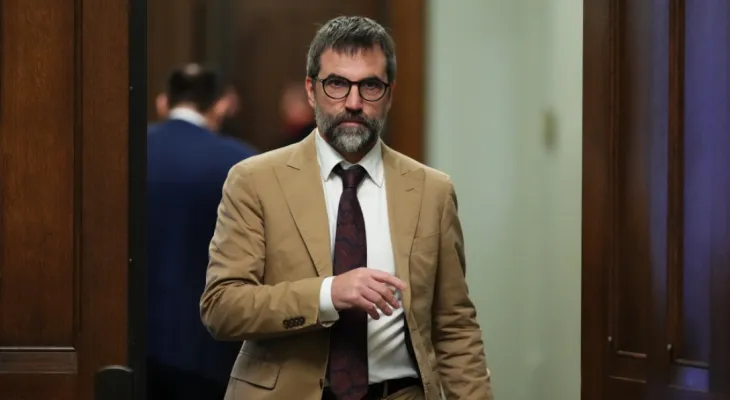Search here
Newspaper
Search here

Arab Canada News
News

Published: November 4, 2024
Canadian oil and gas producers will be required to reduce greenhouse gas emissions by about one-third over the next eight years under new regulations being announced today by Environment Minister Steven Guilbeault.
These regulations, which are still in draft form and delayed by about two years, could increase tensions between Ottawa and the Alberta government, which recently launched a $7 million advertising campaign to "cancel the cap."
For the Liberals, the regulations fulfill the 2021 election promise to compel the energy sector to bear its fair share in combating climate change.
Guilbeault said in an interview with the Canadian press ahead of a news conference he will hold in Ottawa today with Natural Resources Minister Jonathan Wilkinson to clarify more details about the plan: "I think everyone should do their fair share."
Guilbeault noted that the oil and gas industry is a major source of emissions, but it has done less than most other sectors to reduce them in the fight against climate change.
He explained, "I think most Canadians - even those who are not my biggest fans - will agree that it's unacceptable for one sector not to do its part, and that's largely what this regulation is about."
Oil and gas extraction, including production and refining, accounted for about 31 percent of total emissions in Canada in 2022.
On the other hand, the regulations propose to require emissions from oil and gas operations to drop to 35 percent below 2019 levels sometime between 2030 and 2032.
Emissions from this sector have already decreased by 7 percent between 2019 and 2022 - the latest year for which statistics are available - with similar levels of production.
Guilbeault acknowledged there will be backlash, but he is committed to implementing Liberal climate goals.
The government also insists that the regulations can be achieved using existing technology without reducing production.
Guilbeault said that federal modeling shows that even with the regulations, oil and gas production will still rise by 16 percent by 2032 compared to 2019 levels.
He emphasized that reducing emissions from Canada's oil patch is the only way Canadian oil will remain competitive in a world increasingly seeking the greenest options available.
He added, "In a world with carbon constraints, those who will continue to demand oil will demand low-emission oil."
He further stated, "And if our companies and our oil and gas sector do not make the necessary investments to do so, they will not be able to compete in that world."
The cap does not dictate what companies must do to achieve the target, but Guilbeault said modeling suggests that about half of the reductions will come from cuts in methane emissions.
These reductions are already happening as oil producers install equipment to prevent methane leaks, which have been a significant contributor to emissions.
The remainder will be divided among various technologies, including carbon capture and storage.
Ottawa is expected to spend about $12.5 billion on tax credits to encourage and assist companies in investing in systems that capture carbon dioxide and send it back for underground storage.
The outlines of this policy were established nearly a year ago when Guilbeault released a "framework" for the plan, which promised to drive emissions from oil and gas production down to be at least 35 to 38 percent lower in 2030 than they were in 2019.
The draft regulations, which will be open for public comment until January 2025, ultimately chose the minimum end of this range.
Guilbeault said this was decided after extensive discussions about what could be regulated without forcibly reducing production.
Production is likely to be central in the debate as these regulations are issued today.
Several economic studies based on the framework plan as of December 2023 have indicated that the only way to achieve the targets is through production cuts.
The Canadian Conference Board noted in March that total oil and gas production would grow by about 14 percent without an emissions cap and by 1.6 percent with one.
It also predicted that government revenues, especially in Alberta, would be much lower as a result.
It anticipated that employment growth would also be slower, with a more significant impact in Alberta.
Goldy Hyder, President of the Canadian Business Council, stated in a release prior to the emissions regulations that imposing a cap is a wrong step for the country.
Hyder noted that this cap would harm the economy, restrict cross-border energy trade with the United States, and make climate policy "more coherent and uncompetitive."
For her part, Alberta Premier Danielle Smith has vowed to fight the emissions cap, stating it would deliver a "devastating blow" to her province's economy and jobs.
Over the weekend, members of Smith's governing United Conservative Party overwhelmingly voted in favor of a motion to abandon the province's plans to cut emissions and declare that carbon dioxide is essential and not a pollutant.
Conservative leader Pierre Poilievre also pledged to repeal the cap on emissions regulations.
The regulations will not be finalized for several months. The next federal elections may take place before they are actually implemented.
For Guilbeault, getting them out the door in the fight against climate change, which he says has become overly politicized to the point that progressives are faltering, feels like something worth celebrating.
He added, "In this day and age, where climate change has become stuck in this cultural war we are witnessing in many parts of the world, the ability to continue to push for progressive policies to combat climate change is, in itself, a significant victory."
Comments